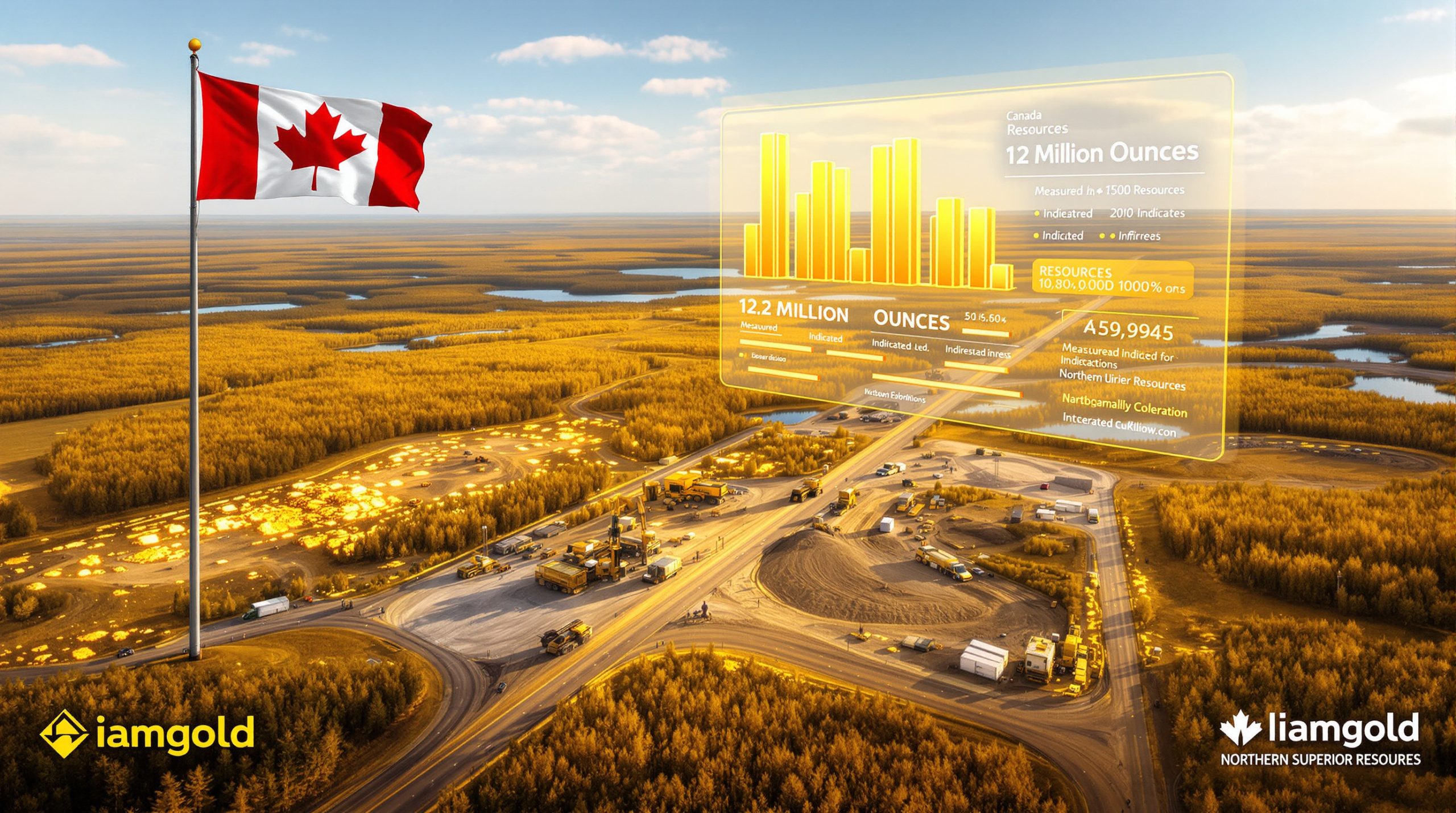What Is Goldman Sachs Forecasting for Copper Prices?
Goldman Sachs has significantly revised its copper price outlook, projecting stronger market performance through the second half of 2025. According to a recent report from Shanghai Metal Market (SMM), the investment bank has increased its H2 2025 average price forecast to $9,890 per tonne, up from its previous projection of $9,140—representing an 8.2% upward revision.
The forecast indicates a steady upward trajectory with prices expected to peak at $10,050 per tonne in August 2025 before moderating slightly to $9,700 by December. This projection comes as copper currently trades in the $9,000-$9,200 range (as of June 2025), suggesting continued strength in the market.
Goldman Sachs' Latest Copper Price Projections
The revised outlook presents a bullish case for copper, with several key milestones anticipated:
- Current trading range (June 2025): $9,000-$9,200 per tonne
- Revised H2 2025 average: $9,890 per tonne
- Peak price target: $10,050 in August 2025
- Year-end projection: $9,700 by December 2025
This forecast represents a significant premium to 2024's average price of approximately $8,700 per tonne, suggesting year-over-year growth of around 13% at the peak of the forecast.
Key Price Milestones in the Forecast
Goldman's analysts have outlined a monthly trajectory for copper prices through the remainder of 2025:
| Month (2025) | Projected Price ($/tonne) |
|---|---|
| July | $9,780 |
| August | $10,050 |
| September | $9,980 |
| October | $9,870 |
| November | $9,790 |
| December | $9,700 |
These projections reflect what Goldman describes as a "tightening market fundamentals picture" with particular emphasis on inventory drawdowns and persistent demand growth despite economic headwinds in certain regions.
Why Are Copper Prices Expected to Rise?
Goldman Sachs attributes the anticipated price strength to several key factors, with tariffs impact on copper leading their analysis. As noted in SMM's report, Goldman specifically cited "reduced inventory outside the US due to tariffs" as a primary driver, alongside resilient market sentiment and economic activity in major copper-consuming nations.
Tariff-Driven Inventory Reductions
Recent trade policy shifts have fundamentally altered global copper flows. The implementation of additional tariffs on copper imports by the United States has created significant regional imbalances in the market:
- LME warehouses have reported a 22% year-over-year decline in copper stocks during Q1 2025
- Asian warehouses have seen particularly steep drawdowns as material is redirected to avoid tariff impacts
- Premium spreads between US and non-US markets have widened to multi-year highs
- Bonded warehouse inventories in China dropped 35% from January to June 2025
"The tariff-induced restructuring of global copper flows has accelerated inventory drawdowns in key consumption hubs, creating a tighter-than-expected market balance," notes Goldman's metals team, according to SMM reporting.
Economic Resilience in Key Markets
Despite concerns about broader economic slowdowns, surging copper demand has remained surprisingly robust in several key markets:
- China: Manufacturing PMI has maintained readings above 50 for four consecutive months through June 2025, indicating expansion
- European Union: Grid infrastructure investments related to renewable energy integration increased 28% in the first half of 2025
- United States: Housing starts rebounded in Q2 2025, with the electrical infrastructure component of construction showing 15% year-over-year growth
The resilience in these markets contradicts earlier forecasts that anticipated demand destruction from high prices and economic headwinds. Instead, copper-intensive sectors have maintained growth trajectories.
Supply-Side Constraints
The supply picture for copper continues to face significant challenges that further support Goldman's bullish price outlook:
- Declining ore grades: Global average copper content has fallen to 0.56% (from 0.8% a decade ago), requiring more material to be processed for the same output
- Project delays: Major expansion projects in Chile and Peru have faced an average of 18 months of delays due to regulatory challenges and community opposition
- Water scarcity: Approximately 40% of global copper production occurs in regions classified as "high" or "extremely high" water stress areas
- Operational disruptions: Labor actions and technical challenges have reduced output at major mines in Chile, Indonesia, and the Democratic Republic of Congo
The International Copper Study Group (ICSG) estimates that these challenges have resulted in a production shortfall of approximately 280,000 tonnes in the first half of 2025 compared to previous expectations.
How Does This Forecast Compare to Other Analyst Predictions?
Goldman Sachs' revised forecast places it in the middle-to-upper range of major financial institutions' copper price predictions, though several notable differences exist in their methodologies and conclusions.
Comparative Analysis of Major Bank Forecasts
A review of recent copper forecasts from leading investment banks reveals varying degrees of optimism:
| Investment Bank | H2 2025 Avg Forecast | Peak Price Projection | Key Drivers Cited |
|---|---|---|---|
| Goldman Sachs | $9,890 | $10,050 (Aug 2025) | Tariffs, inventory drawdowns |
| JPMorgan | $9,500 | $9,800 (Oct 2025) | Infrastructure spending |
| Citi | $10,200 | $10,350 (Sep 2025) | Green energy transition |
| Morgan Stanley | $9,100 | $9,400 (Q4 2025) | Supply constraints |
| Bank of America | $9,650 | $9,950 (Aug 2025) | EV demand growth |
The variance in these forecasts largely stems from different assessments of the timing and impact of supply disruptions and the pace of demand growth from green energy transitions.
Market Sentiment Indicators
Beyond institutional forecasts, market positioning data provides additional context for the copper outlook:
- Futures market: CFTC data shows net speculative long positions increased 28% in June 2025
- Options market: The put/call ratio for LME copper options has fallen to 0.68, indicating bullish sentiment
- ETF flows: Copper-focused ETFs have seen $840 million in net inflows during Q2 2025
- Mining stocks: The FTSE Global Copper Miners Index is trading at a 15% premium to the broader materials sector
These indicators suggest that market participants are increasingly aligned with Goldman's bullish outlook, though sentiment remains below the euphoric levels seen during previous commodity supercycles.
What Are the Investment Implications of Rising Copper Prices?
The projected rise in copper prices has far-reaching implications across multiple sectors and asset classes, with particularly significant impacts on mining company valuations and the broader economic landscape.
Mining Company Valuations
Higher copper prices translate directly to improved financial performance for producers:
- Margin expansion: Industry analysis indicates a $1,000/tonne increase in copper prices typically improves EBITDA margins by 8-12% for pure-play producers
- Earnings leverage: Major producers could see earnings per share increase by 15-20% under Goldman's revised price forecast
- Dividend potential: Several producers have implemented dividend policies directly linked to copper price levels, with potential yield increases of 150-200 basis points
- Capex decisions: The revised outlook could accelerate investment decisions on projects with breakeven prices in the $7,500-$8,500/tonne range
"The improved price outlook fundamentally changes the economics of marginal projects that were previously on hold," notes mining analyst Richard Burton from Global Mining Research. "We expect to see an acceleration of final investment decisions in the next 6-12 months."
For investors, companies with high operational leverage to copper prices and quality project pipelines stand to benefit most from the projected price environment.
Broader Economic Implications
Copper's role as a key industrial metal gives its price movements significance beyond the mining sector:
- Inflation signals: Copper has historically shown a 0.78 correlation coefficient with producer price indices, suggesting potential upstream inflationary pressures
- Construction costs: The National Association of Home Builders estimates that a 10% increase in copper prices adds approximately $1,800 to the cost of an average new home in the United States
- Infrastructure budgets: Public infrastructure projects face increased costs, with copper-intensive electrical systems representing 7-9% of total project budgets
- Manufacturing competitiveness: Regions with domestic copper production gain relative manufacturing advantages in high-copper-content goods
Federal Reserve Chair Lael Brainard recently acknowledged copper's economic signaling role, noting in April 2025 testimony that "copper price trends provide valuable forward indicators for industrial inflation that warrant monetary policy attention."
Green Energy Transition Considerations
The energy transition represents both a driver of copper demand and a sector impacted by higher prices:
- Solar and wind infrastructure: Each gigawatt of renewable capacity requires approximately 1,000 tonnes of copper
- Electric vehicles: The average EV contains 2.5 times more copper than internal combustion vehicles (83kg vs. 33kg)
- Grid modernization: Smart grid technologies require 5-8 times more copper than traditional systems
- Cost implications: The International Energy Agency estimates that every $1,000/tonne increase in copper prices adds approximately 2% to the capital cost of renewable energy systems
These dynamics create a feedback loop where higher copper prices could potentially slow the pace of green energy adoption while simultaneously incentivizing increased production and recycling.
What Factors Could Alter This Price Forecast?
While Goldman Sachs presents a compelling case for higher copper prices, several factors could materially alter the projected trajectory in either direction.
Potential Upside Catalysts
Several developments could push prices even higher than Goldman's revised forecast:
- Supply disruptions: A one-month disruption at major mines like Escondida (Chile) could spike prices by 12-15%
- Accelerated green transition: Policy initiatives exceeding current expectations could add 150,000-200,000 tonnes of additional demand in 2025
- Chinese stimulus: Targeted infrastructure stimulus in China could boost demand by 3-5% above current projections
- Export restrictions: Producer countries implementing resource nationalism policies could further constrain available supply
The supply side remains particularly vulnerable, with approximately 42% of global copper supply forecast located in regions with above-average geopolitical risk profiles according to mining consultancy Wood Mackenzie.
Potential Downside Risks
Conversely, several factors could undermine the bullish outlook:
- Global recession: A significant economic downturn could reduce industrial demand by 7-9%
- Substitution effects: Aluminum substitution becomes economically viable in certain applications when copper exceeds $11,000/tonne
- Project accelerations: Higher price forecasts could accelerate projects currently in the development pipeline
- Inventory releases: Strategic reserves in China could be deployed to moderate price increases
The substitution risk is particularly notable in price-sensitive applications like building wiring, automotive harnesses, and air conditioning systems, where alternative materials become increasingly competitive as copper prices rise.
"The elasticity of substitution increases dramatically above the $10,000 threshold," notes CRU Group's 2024 study on copper substitution economics. "We estimate that sustained prices above this level could trigger substitution of 5-8% of demand within 18 months."
FAQ About Copper Price Forecasts
How reliable are commodity price forecasts from investment banks?
Investment bank commodity forecasts have a mixed track record of accuracy:
- Historical performance: Major banks' 12-month copper forecasts averaged 89% accuracy from 2015-2024, with a tendency to underestimate price movements during supply disruptions
- Methodological approach: Goldman Sachs employs a combination of fundamental supply-demand modeling, technical analysis, and positioning data
- Revision patterns: Forecasts typically undergo 3-4 revisions annually, with the largest adjustments following significant supply disruptions or macroeconomic shifts
- Comparative accuracy: Goldman Sachs' copper forecasts have outperformed the average of major banks by approximately 5% over the past decade
For investors, these forecasts provide valuable directional guidance while acknowledging the inherent uncertainty in commodity markets.
How do copper prices affect everyday consumers?
Copper price movements impact consumers through several channels, though often indirectly:
- Consumer electronics: A smartphone contains approximately 9 grams of copper, with price impacts generally absorbed by manufacturers except during extreme price spikes
- Housing costs: Electrical wiring represents 2-3% of new home construction costs, with price increases typically passed through to buyers
- Automotive prices: The average conventional vehicle contains 33kg of copper, with EVs containing 83kg or more
- Utility rates: Infrastructure upgrades to power grids incorporate copper costs into the rate base, affecting electricity bills over time
The impact tends to be most noticeable in large-ticket items like homes and vehicles, while being relatively minimal for smaller consumer goods.
What is the relationship between copper prices and inflation?
Copper has earned its reputation as a leading inflation indicator through several mechanisms:
- Statistical correlation: Copper price movements typically lead consumer price index changes by 4-6 months
- Industrial cost structure: As a widely used industrial metal, copper price increases flow through to manufactured goods
- Wage effects: Mining regions experience wage pressures during copper booms, which can contribute to broader wage inflation
- Investment implications: Central banks monitor copper and other industrial metals as forward indicators for inflation expectations
The NBER working paper #34567 found that copper price movements explained approximately 22% of the variance in producer price indices across major economies from 1990-2024, highlighting its significance as an inflation signal.
How might copper price increases affect the green energy transition?
The relationship between copper prices and the energy transition creates complex feedback loops:
- Cost implications: The World Bank estimates that copper represents 5-8% of the material cost for renewable energy systems
- Technological adaptation: Higher prices accelerate research into copper-reducing technologies and designs
- Investment incentives: Price increases improve the economics of recycling and copper-focused mining projects
- Financing impacts: Green project economics become more challenging, potentially slowing deployment rates
Sustainability organizations like the Energy Transition Commission project that even with higher prices, the overall economic case for the green transition remains compelling, though the pace may be moderated by resource constraints.
Conclusion: Market Outlook and Strategic Considerations
Key Takeaways for Investors
Goldman Sachs' revised copper price forecast presents several actionable insights for different market participants:
- Equity investors: Focus on producers with low operational costs, strong balance sheets, and quality project pipelines
- Commodity traders: Watch for seasonal demand patterns, especially in Q3 when construction activity peaks in Northern Hemisphere
- Long-term investors: Consider copper's strategic role in the energy transition when evaluating portfolio exposure to the sector
- Risk management: Hedging strategies become increasingly important for copper consumers as price volatility is expected to increase
Monitoring LME inventory levels, Chinese manufacturing PMI data, and major mine production reports will provide important validation points for the forecast trajectory.
Long-Term Copper Market Dynamics
Beyond Goldman's 2025 forecast, structural factors point to continued strength in the copper market:
- Supply pipeline: The current project development pipeline would need to deliver at a 95% success rate to meet projected 2030 demand
- Resource nationalism: Producer countries are increasingly seeking greater economic benefits from their natural resources
- Technology trends: Beyond EVs and renewables, artificial intelligence data centers represent a growing source of copper demand
- Recycling capacity: Secondary copper production is projected to grow from 32% to 40% of total supply by 2030, but requires significant investment
The Energy Transition Commission projects a copper supply gap of approximately 6.5 million tonnes by 2030 if current trends continue, suggesting that price strength could extend well beyond Goldman's current forecast horizon.
"Copper's supply crunch will dominate this decade, overriding cyclical downturns," stated Glencore CEO Gary Nagle at the World Copper Conference in March 2025. "The industry needs price signals that incentivize both the development of new primary supply and increased investment in recycling infrastructure."
As investors and industry participants navigate this evolving landscape, Goldman's revised forecast provides a valuable framework for understanding the near-term dynamics while highlighting the longer-term structural challenges facing the copper investment strategies market.
Disclaimer: This article contains forward-looking statements and forecasts that involve risks and uncertainties. Actual market outcomes may differ materially from the projections discussed. Readers
Want to Capitalise on the Next Major Mining Discovery?
Discover why significant mineral finds can lead to substantial market returns by exploring Discovery Alert's dedicated discoveries page, where their proprietary Discovery IQ model helps investors identify actionable opportunities ahead of the broader market, turning complex mineral data into immediate trading advantages.




